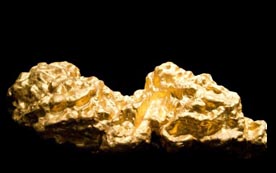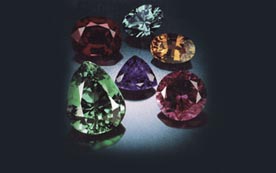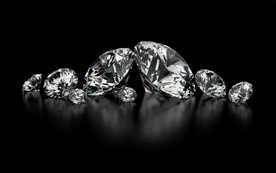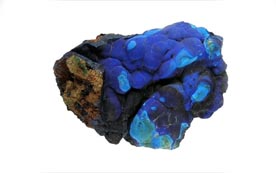Neohellenic Jewellery
12 Dec 2012- Details
- Written by Saonl
 Jewellery accompanies man at the major stages in his life cycle, such as birth and marriage, as well as at important moments of expressing love. The tradition of silver and goldmithing in Greece is lost in the mists of time. In Greek mythology Hephaestus, god of fire, the "divine smith", appears as the inventa of metal working. In his Olympian forge he fashioned such magnificent works as Achilles shield, Herakles' golden breast-plate, Zeus' scepter and throne, Ariadnes' wedding crown. In the course of 5000 years miniature creations in metd, noble are base, have made their mark on Hellenic civilization.
Jewellery accompanies man at the major stages in his life cycle, such as birth and marriage, as well as at important moments of expressing love. The tradition of silver and goldmithing in Greece is lost in the mists of time. In Greek mythology Hephaestus, god of fire, the "divine smith", appears as the inventa of metal working. In his Olympian forge he fashioned such magnificent works as Achilles shield, Herakles' golden breast-plate, Zeus' scepter and throne, Ariadnes' wedding crown. In the course of 5000 years miniature creations in metd, noble are base, have made their mark on Hellenic civilization.
The Neohellenic jewellery in museums and private collections is distinguished by its impressive quality and remarkable variety. Spanning a broad continuum in space and time, the illustrate aspects of both Turkish – occupied Greece and the Hellenic diaspora after the fall of Byzantium.  These exquisite objects, valuable reflections of the panorama of Hellenism, include not only jewellery wrought by native crafts – men but also that of foreign origin which was incorporated in the Greek tradition, remodeled and adapted, its variations taking their place alongside ancient Greek and Byzantine memories in the artistic history of this land. In more recent times, among the elements composing the distinctive character of Neohellenic art the deeply ingrained Byzantine tradition merits special mention. Heir to the art of ancient Greece, it in its turn bequeathed to posterity forms and shapes, colours and materials, imprinted in new orcations. Diverse influences of Western inspiration, nurtured by and filtered through Greek antiquity also, reached Greece via the Venetian – held territories, while the later invasion of baroque and rococo traits from Italy and Central Europa, as well as the impact of the highly decorative aesthetic of Islamic art, were readily assimilated by the skilful Greek craftmen.
These exquisite objects, valuable reflections of the panorama of Hellenism, include not only jewellery wrought by native crafts – men but also that of foreign origin which was incorporated in the Greek tradition, remodeled and adapted, its variations taking their place alongside ancient Greek and Byzantine memories in the artistic history of this land. In more recent times, among the elements composing the distinctive character of Neohellenic art the deeply ingrained Byzantine tradition merits special mention. Heir to the art of ancient Greece, it in its turn bequeathed to posterity forms and shapes, colours and materials, imprinted in new orcations. Diverse influences of Western inspiration, nurtured by and filtered through Greek antiquity also, reached Greece via the Venetian – held territories, while the later invasion of baroque and rococo traits from Italy and Central Europa, as well as the impact of the highly decorative aesthetic of Islamic art, were readily assimilated by the skilful Greek craftmen.  The epic of Neohellenic jewelers was written in these times. Silver was the medium par excellence, fron which were wrought significant signed and anonymous works, resplendent ecclesiastical silverware as well as intricate secular ornaments, mirroring the aesthetic preferences of different sections of society jewellery-making was essentially a workshop art associated with guild organization. In addition to itinerant craftsmen who traveled throughout Ottoman – held Greece, renowned centres of silver – and goldsmithing developed in Epirus, in Macedonia, in Thessaly, n Peloponnese, in Central Greece. Workshops were established on the island too, in Crete, Cyprus, on Zakynthos and Corfu, while the products of Greek jewelers creating in Constantinople and Pontos – Argyroupoli and Trebizond. Mapping the distribution of the
The epic of Neohellenic jewelers was written in these times. Silver was the medium par excellence, fron which were wrought significant signed and anonymous works, resplendent ecclesiastical silverware as well as intricate secular ornaments, mirroring the aesthetic preferences of different sections of society jewellery-making was essentially a workshop art associated with guild organization. In addition to itinerant craftsmen who traveled throughout Ottoman – held Greece, renowned centres of silver – and goldsmithing developed in Epirus, in Macedonia, in Thessaly, n Peloponnese, in Central Greece. Workshops were established on the island too, in Crete, Cyprus, on Zakynthos and Corfu, while the products of Greek jewelers creating in Constantinople and Pontos – Argyroupoli and Trebizond. Mapping the distribution of the  Greek jewellers' workshops reveals regional differences in designs and techniques. In Neohellenic society jewellery was an integral part of the male and the female costume at all levels of society impressive for its artistic quality, regardless of whether it was of valuable material, it also reflected the economic status of the family, as in the bridal parure, the decoration of weapons, household ornaments and ressels. Artistic creations and by extension decoration and jewellery, are vital elements of everyday life, their presence setting its seal on Greek civilization to this day. So is explained the flourishing art of secular silver and goldsmithing in Greece, with a host of workshops dispered throughout the country.
Greek jewellers' workshops reveals regional differences in designs and techniques. In Neohellenic society jewellery was an integral part of the male and the female costume at all levels of society impressive for its artistic quality, regardless of whether it was of valuable material, it also reflected the economic status of the family, as in the bridal parure, the decoration of weapons, household ornaments and ressels. Artistic creations and by extension decoration and jewellery, are vital elements of everyday life, their presence setting its seal on Greek civilization to this day. So is explained the flourishing art of secular silver and goldsmithing in Greece, with a host of workshops dispered throughout the country.  Easily carried and concealed, and wrought from precious materials, jewellery was an ideal medium for saving and investment during the Turkish Occupation. Conversely, for the very same reasons it was seized in trouble times. The techniques used in working metals included engraring, embossing – punching, repousse, hammering – casting, perforation
Easily carried and concealed, and wrought from precious materials, jewellery was an ideal medium for saving and investment during the Turkish Occupation. Conversely, for the very same reasons it was seized in trouble times. The techniques used in working metals included engraring, embossing – punching, repousse, hammering – casting, perforation  and filigree, often combined with granulation. Polychrome effects were achieved by setting with hard stones, agate, coral and imitation gems of glass, as well as enamelling – cloisonne and champleve – and niello (savati). Greek jewellery can be classed into mainland and island creations. The wide repertoire of enchanting themes includes ships with colourful enamel sails, motifs from the plant and animal kingdoms, escutcheons, figures of saints
and filigree, often combined with granulation. Polychrome effects were achieved by setting with hard stones, agate, coral and imitation gems of glass, as well as enamelling – cloisonne and champleve – and niello (savati). Greek jewellery can be classed into mainland and island creations. The wide repertoire of enchanting themes includes ships with colourful enamel sails, motifs from the plant and animal kingdoms, escutcheons, figures of saints  and of ordinary fold, pendent coins, mythical subjects and Neoclassical traits. The result in distinguished by boundless imagination and regional variation. The systematic study of Neohellenic art has developed apace in recent years, for not only is there an increasing awareness of its important role in shaping contemporary Greek culture, but also an appreciation of the value of its creations as models for the art of today.
and of ordinary fold, pendent coins, mythical subjects and Neoclassical traits. The result in distinguished by boundless imagination and regional variation. The systematic study of Neohellenic art has developed apace in recent years, for not only is there an increasing awareness of its important role in shaping contemporary Greek culture, but also an appreciation of the value of its creations as models for the art of today.
 |
 |
 |
 |
 |
 |
Kate Synodinou

 beat
beat
 The choice of the wedding ring that will accompany the finger of the right hand forever is a very important case. What is the symbolization of a Wedding ring?? When the wedding ring established as accustom and by whom? First of all we must clearify that an Engagement ring and a Wedding ring is not the same. The engagement ring borned after 13th century when Pope Innokentios. The P declared that it should be a period between the engagement and the marriage.
The choice of the wedding ring that will accompany the finger of the right hand forever is a very important case. What is the symbolization of a Wedding ring?? When the wedding ring established as accustom and by whom? First of all we must clearify that an Engagement ring and a Wedding ring is not the same. The engagement ring borned after 13th century when Pope Innokentios. The P declared that it should be a period between the engagement and the marriage.







